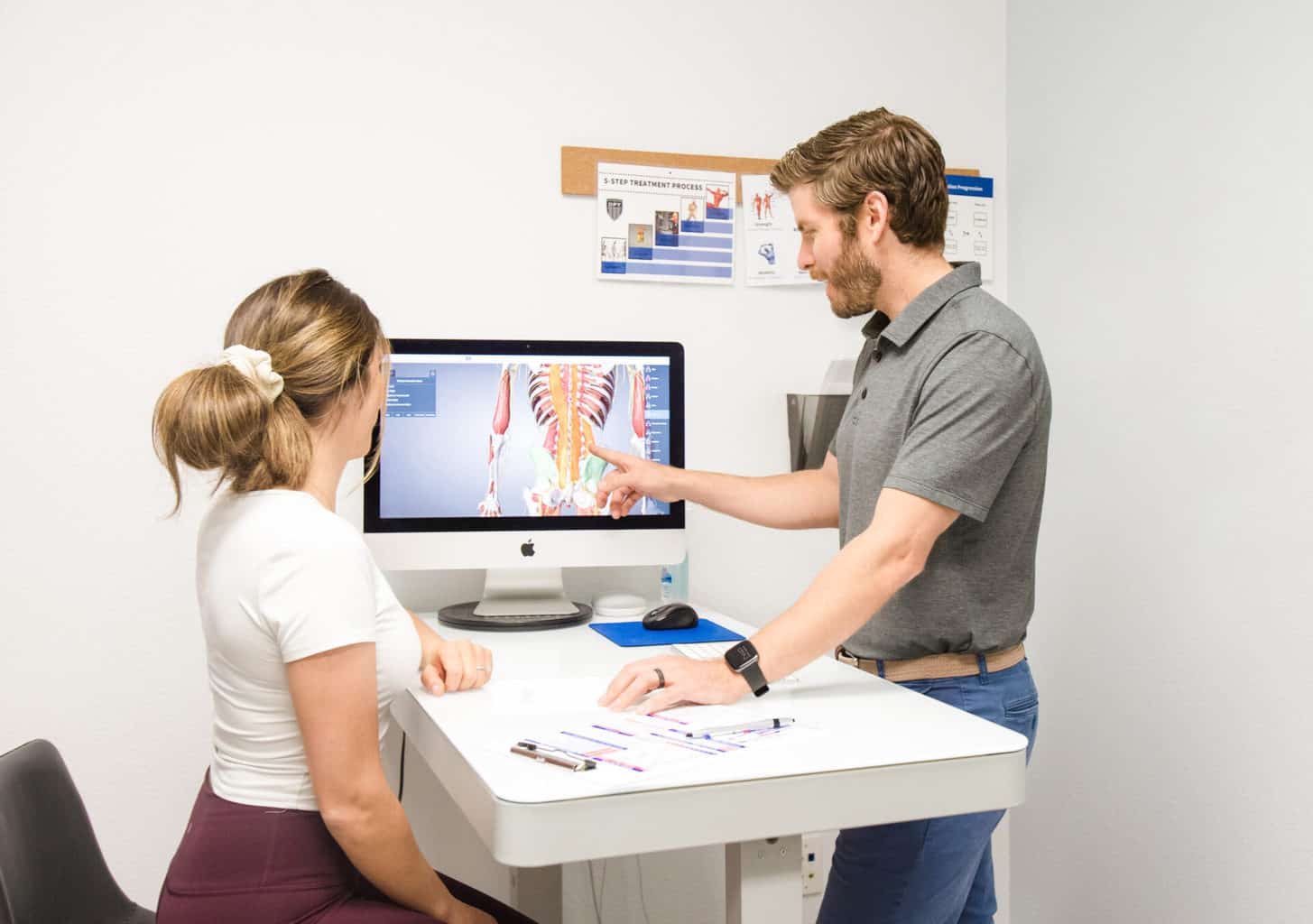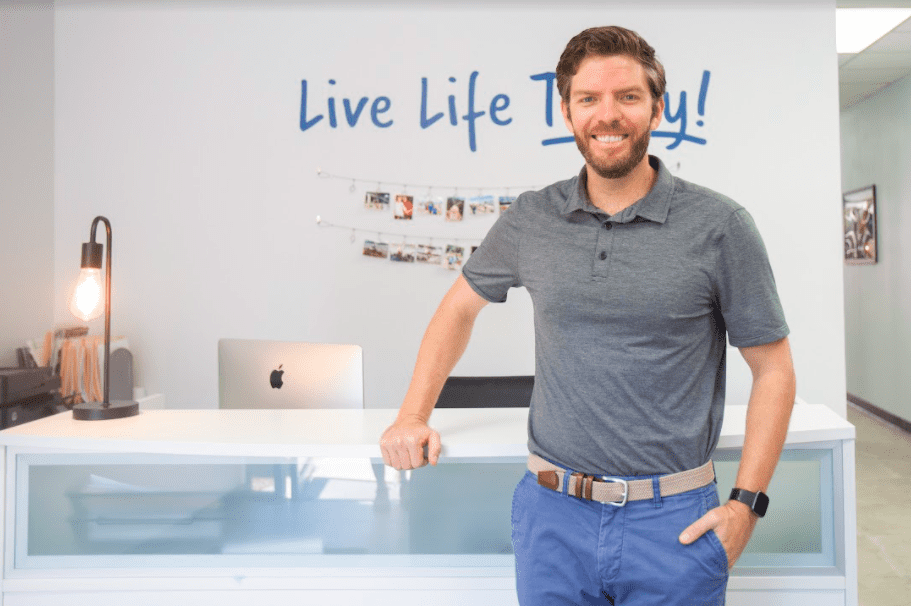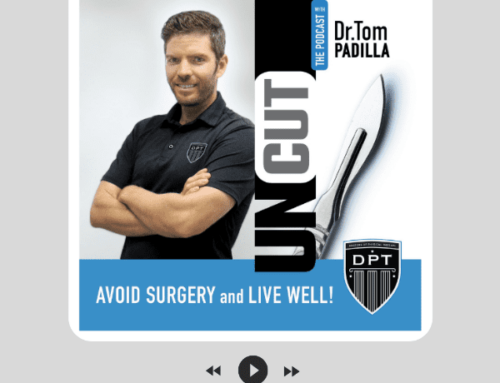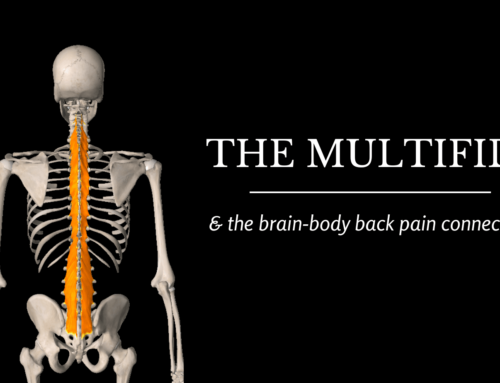
More and more these days, people consider joint and muscle pain normal. It’s written off because so many people have it, and the treatment methods for it don’t seem to be very effective. In this article we’re revealing what really makes joints stiff, what makes muscles stiff, and why many of the treatments out there just seem to put a band-aid on the symptoms and don’t actually address the cause.
Your Muscles Aren’t The Problem. It’s Your Brain.
The first thing I usually try to help people understand is that muscles are not very intelligent, they only do what they’re told. The thing that’s telling the muscles what to do is the brain. So muscles are only responding to messages that are coming from the brain. Usually if there’s stiffness in a muscle, it’s because the brain is telling it to tighten up. It does this when there’s another muscle that’s not doing its job, so the brain tries to recruit other muscles for the job to compensate for it.
Essentially, you have two primary muscle groups. You have a group of muscles called your stabilizers and you have a group of muscles called your movers. Now, if you took your skeleton, without the muscles, the only things holding it together are the way the bones fit together and the ligaments. So when your body wants to start moving, the brain has to send signals to the muscles, and the order in which it does this is first, it sends signals to the stabilizers, to stabilize the structure of your skeleton and spine to make it nice and sturdy so that any heavy object you pick up doesn’t knock you over. Then, it sends signals to your movers. These are the big guys that are responsible for lifting heavy objects. When you’ve had any sort of prolonged injury or pain your brain starts activating those big movers as a way of protecting the injured area to allow it to heal over time.
The brain gets used to this new signal-sending pattern and starts to use those big movers too much, continuing to use that pattern long after the area has healed. So now those big movers are doing everything–including stabilizing. So over time, those small stabilizers stop being used at all and essentially turn off. Without regular use, these stabilizers get weaker and start to atrophy. Scar tissue and fatty infiltrates start to develop, which makes it harder for the muscles to contract and support your skeleton.
So, over time, this pattern gets even more reinforced because now the brain doesn’t actually even know how to use the stabilizers, and if it tried, they wouldn’t work very well because of how weak they’ve become, so it’s hard to bring them back.
Your Muscles Are Over-Worked
When this pattern has existed in the brain for a long enough time, those big muscles become overused. And so then you start getting muscular aches and pains and they just keep getting stiffer and stiffer because they’re always in use, never getting a chance to relax. Now, these big, powerful muscles are “always on,” and they start to compress the joints they surround. And so now you’ve got a situation where the small muscles, or the stabilizers, aren’t stabilizing the joint the way they should because the big muscles have taken over.
So you get these powerful muscles starting to clamp down on the joint in an attempt to stabilize it. So you’ve essentially got a joint that’s loose and being compressed at the same time, which creates something like a mortar and pestle effect, or a grinding of the bone. And so from this, you start to get arthritic changes because the joint itself is too loose, and the typical advice has been to even further strengthen the muscles around the joint.
Let’s look at something like knee pain, for example. For a long time, it’s been taught that if you have knee pain, you should strengthen the muscles around your knee. But if the reason that you have knee pain is because there are weak muscles inside your hip not stabilizing that joint, then you’re not really addressing the correct problem. Instead, you start to overuse the muscles in your knee. The knee-strengthening exercises are only going to be able to keep the pain at bay for so long because those muscles are still going to be compensating for the weakness in your hip, which will then cause increased compression and degeneration and arthritic change over time.
What Causes Arthritis
Eventually this grinding goes on long enough to create joint inflammation and arthritic conditions. This is where it’s important to understand that arthritis is not always forever. Arthritis simply means joint inflammation. If there are factors that are causing the joint inflammation, then it is simply the result of those conditions (conditions that can be changed…).
In other words, if you fix the instability in the hip and the over-tightness in the muscles that are compensating, the active arthritis should go away. You’ll still be left with whatever damage has already taken place, but with time, the body can recover to a certain extent, and you’re certainly avoiding doing any additional damage to the area.
Why What You’ve Tried Hasn’t Worked
So what’s the solution to all of this? Because we talked a lot about short-term solutions, I’ll give you some examples. So let’s say that you have back pain, and you go to a chiropractor to get that pain fixed. Most chiropractors will manipulate the joints in your back. This will give those joints a little bit of extra play and movement and feels good because you’ve relieved the stiffness. Temporarily. Over time the stiffness does come back, and that’s because those stiff muscles are still doing all the work. So of course, that joint stiffness returns.
You might have tried massage or foam rolling as a way to relieve those stiff muscles, and it worked for a little while. They stay nice and loose for maybe a month or so the first time. The next time, for a few weeks, and then after a while the relief only lasts a few days. Slowly, it starts to last for less and less time.
So you get one of those massage guns and start beating away. It feels good for a little while! But over time, you find yourself doing it a couple times a day just to find the same relief. So what’s going on here? Well, what’s going on is that the little muscles are still not firing, and at this point, your brain has become an absolute expert at firing the wrong muscles.
It’s got a pathway and it knows that pathway and it’s just going to keep doing it. And unless you’re able to re-teach your brain the other pattern that it used to know and overwrite the bad pattern with the good one, it’s going to continue happening. So the two reasons that this keeps happening and you only get short-term results is because you’re focusing on the effect, which is joint or muscle stiffness, and not the cause of that joint or muscle stiffness.
How To Fix Muscle And Joint Pain By Finding The Root Cause
At this point, the brain has changed which muscles it uses (and in which order) to stabilize your spine and perform movement. Correcting that requires very specific positions and very specific exercises to increase your brain’s awareness of where your stabilizing muscles are and how to effectively use them.
When you’re able to remap which muscles your brain uses to perform movement and can start reactivating your stabilizers, then those big stiff muscles calm down because the brain realizes that it no longer needs them to be so stiff. And when that happens, you’re able to go in and move those joints.
And, finally, you can keep that joint mobility because those big muscles aren’t clamping down anymore. Then you stop getting that acute, arthritic pain or that muscular stiffness and aching and you’re actually able to strengthen those stabilizing muscles in a way that yields lasting results so that it doesn’t easily return.
So there you have it. That is the true way to fix recurring muscle stiffness and joint aches. If you’ve had these issues going on for more than 30 to 60 days, your brain has already started remapping to use the incorrect muscles.
And at this point, the only way to prevent that from becoming hardwired is to do things that will stop, and reverse, the remapping. That’s what’s going to set you up for long-term success. By using the right muscles to stabilize, your joints and muscles can stay healthy, moving, and mobile.
This is the only effective way to stop battling the chronic tightness or stiffness in the muscles or joints. You have to change the brain to change the rest of the body.
Treating The Cause of Muscle Tightness, Not The Symptoms
So, in summary, the reason that joint and muscle pain and stiffness is now thought of as a normal part of aging is because we have been chasing the symptoms instead of the cause. We’ve been trying to treat the joints and muscles, which is a very small part of a chain reaction that actually starts in the brain.
If this was helpful to you and you need any sort of help with chronic muscular stiffness or tightness, our clinic for physical therapy in Scottsdale, Arizona will be happy to provide you with some more insights into your pain and discuss ways to get to the root of it. Simply click the button below.
This is Dr. Tom Padilla with the Doctors of Physical Therapy in Scottsdale, Arizona, helping you, and thousands of others in the Valley, live life today.
To discover the root cause of your muscle and joint pain, schedule a call with our client care coordinator. She’ll get to know your situation and set up a free, 30-minute consultation with one of our doctors where you’ll find out what’s causing your pain, why what you’ve tried in the past hasn’t worked, and what your options are going forward—that aren’t painkillers or surgery.





